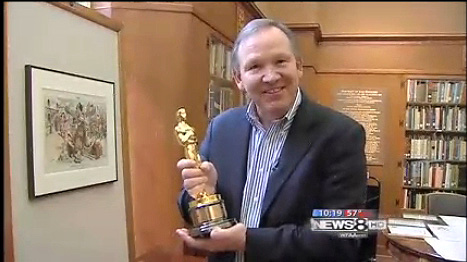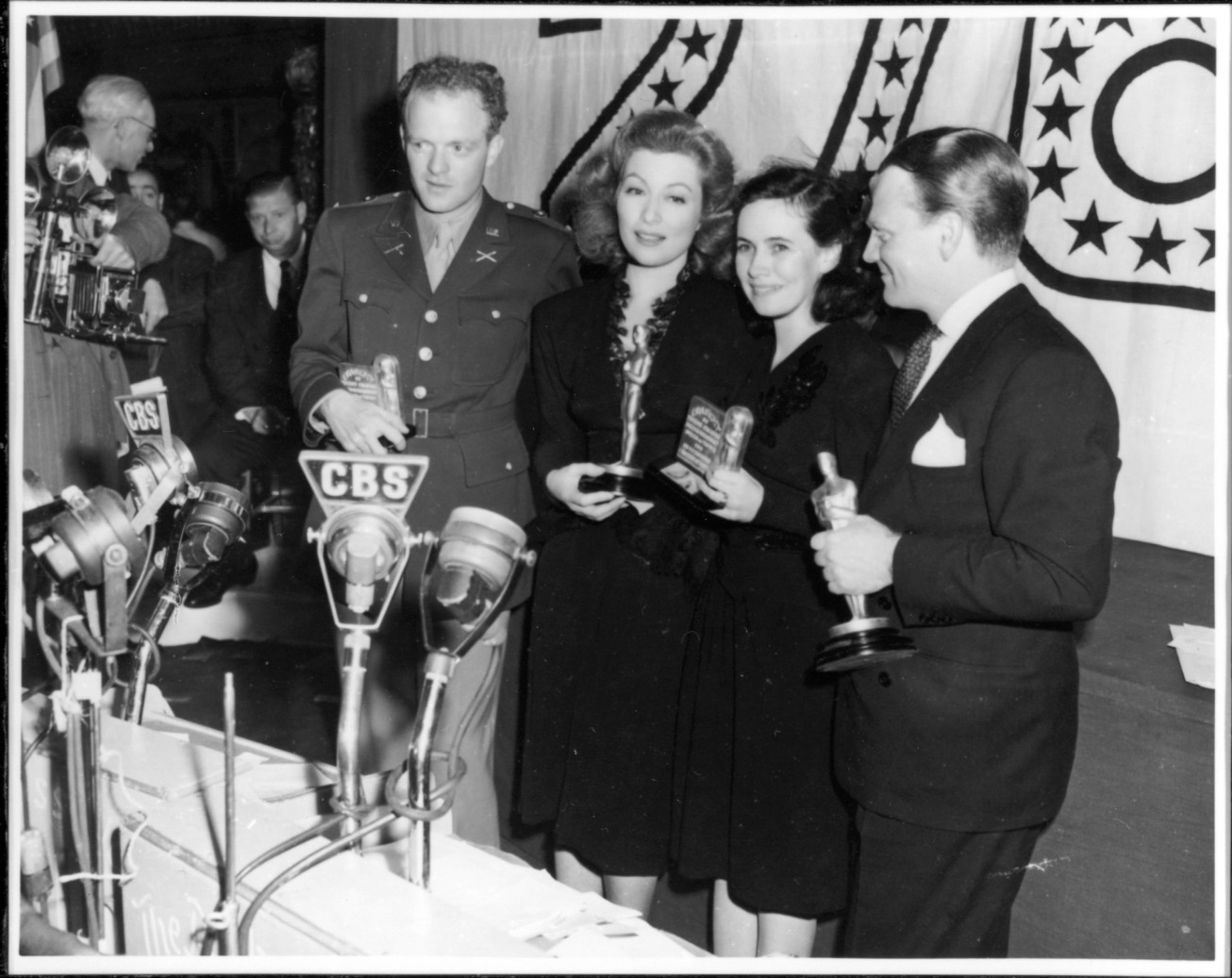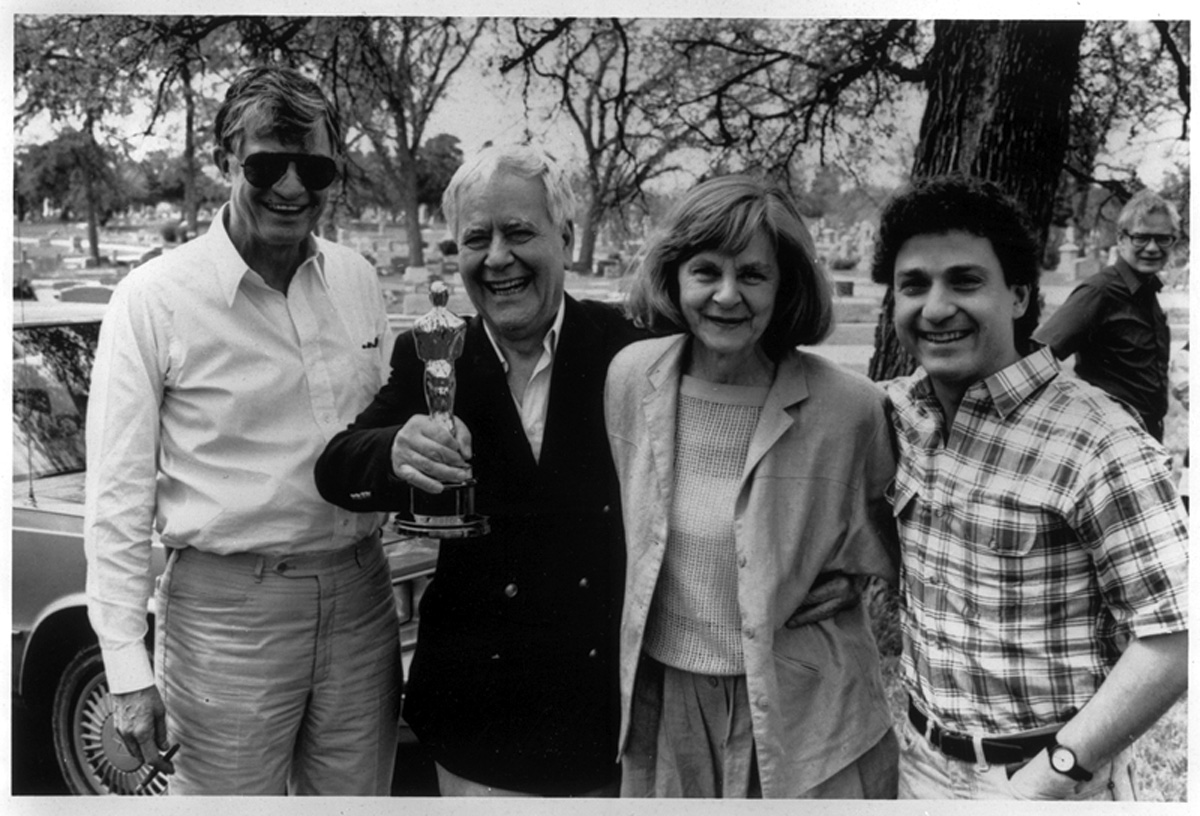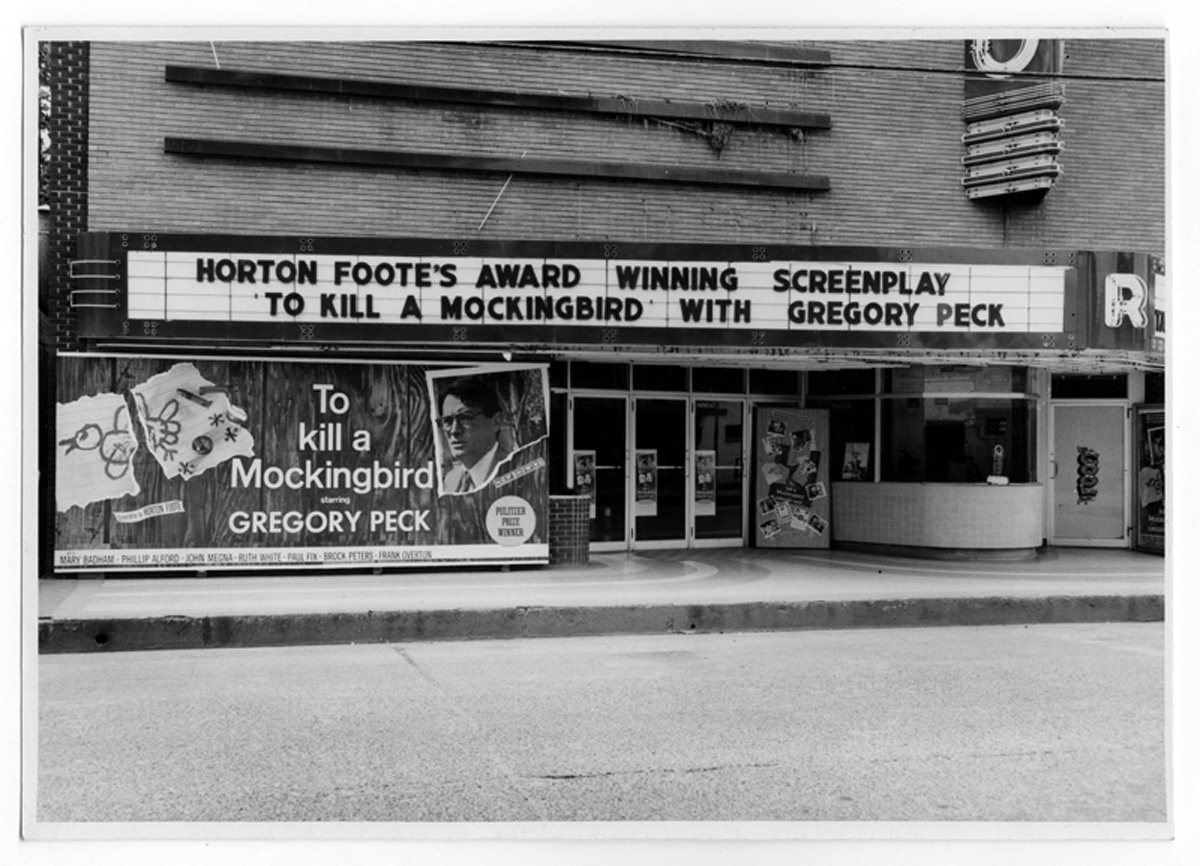SMU: A leading role in Oscar’s history
With the Academy Awards set for Sunday, you need look no further than the SMU libraries for samples of Oscar history.

While Hollywood prepares to celebrate the 82nd annual Academy Awards, North Texas need look no further than SMU to find priceless pieces of Oscar history.
 See a report on the collection by Gary Gogill of WFAA News |
SMU library collections include almost 70 years of Academy Award history, such as Greer Garson's 1942 Oscar for "Mrs. Miniver, " four 1951 Academy Award envelopes complete with red seals and winners' names, and Horton Foote's original screenplay and dialogue notes for the 1983 Oscar-winning screenplay, "Tender Mercies."
Here's a sampling of Hollywood history preserved in SMU libraries.
1940s
Greer Garson's 24-karat gold-plated 1942 Oscar statuette for best actress in "Mrs. Miniver," Garson's 5½- minute speech in 1942 still holds the record for the longest Academy Award acceptance speech. Garson shares the record with Bette Davis for most consecutive best actress nominations – five from 1941 to 1945.
Jennifer Jones' brown leather sandals from her role in the 1946 Academy Award-nominated film "Duel in the Sun."
1950s
The envelopes please After the 1951 ceremony at the RKO Pantages Theatre in Hollywood, the stage manager saved the presentation envelopes, announcements and program from the dustbin. The winners' names are typed in all caps on plain manila cards. The 1951 awards were the last to be broadcast only on radio.
- Best Screenplay: "An American in Paris"
- Best Actress: Vivien Leigh in "A Streetcar Named Desire"
- Best Actor: Humphrey Bogart in "African Queen," his only Oscar
- Best Supporting Actor: Karl Malden in "A Streetcar Named Desire," his only Oscar
1960s
Horton Foote's 1962 Academy Award-winning screenplay for "To Kill a Mockingbird" with handwritten revisions and dozens of steno pads filled with his notes. No photos exist of Horton Foote at the ceremony because he expected "Lawrence of Arabia" to sweep the awards and stayed home to watch the ceremony in his pajamas with his family. SMU libraries also document in cards and letters Foote's lifelong friendship with reclusive To Kill a Mockingbird author, Harper Lee.
Interview with Pauline Kessinger, cook for the stars of 1969 "True Grit" In a 38-page unpublished transcript, the former head of the Paramount commissary remembers providing meals to Best Actor winner John Wayne and the rest of the cast and crew during the filming of "True Grit."
 Greer Garson (left center) at the 1942 Academy Awards with (l. to r.) Van Heflin, Teresa Wright and James Cagney. |
 Horton Foote (left center) with his Oscar for "Tender Mercies" while on the set of "1918." |
 Marquee of the theater in Horton Foote's hometown of Wharton, Texas, in 1963. |
| Click images for larger versions. More about the 2010 Academy Awards. |
1970s
Interview with John Houseman, 1973 Best Supporting Actor for "Paper Chase" In this 33- page unpublished transcript the actor reflects on his 50-year career.
Interview with Joel Grey, 1972 Best Supporting Actor for "Cabaret" Grey discusses creating his role in the Broadway and film versions of "Cabaret" in a 26-page unpublished transcript.
1980s
Shooting scripts for Horton Foote's 1983 Academy Award-winning screenplay "Tender Mercies. " The film earned five Academy Award nominations and won in two categories including Best Actor for Robert Duvall, his only Oscar. The collection includes dozens of steno pads with Foote's notes and handwritten script revisions for the movie about the downtrodden country western singer.
From the experts
Russell Martin, director, DeGolyer Library
"Libraries like the DeGolyer exist to collect and preserve primary materials and make them accessible. In the case of a writer like Horton Foote, all drafts, notes, false starts, revisions, and production scripts are important in following the historical development of his ideas. Textual scholars in the years to come will have a field day with his archive. I'll never forget that when Mr. Foote came to SMU in 2003 to receive an honorary degree, we had displayed some of the early manuscripts of his play, 'The Trip to Bountiful.' He looked at the pages on view in the exhibit case and said, 'I think I'll change that. I think I can make it better.' And so it goes: literary manuscripts are tangible links to the writer and the creative process. When researchers study such materials at SMU, they help advance our understanding and appreciation of literary works."Rick Worland, professor of cinema-television, SMU
"It is important to preserve some of the ephemera of the Oscars because they represent aspects of the physical culture of the art and entertainment of the Hollywood industry, one of the most influential aspects of American society and global culture in the 20th century. . . .Everyone knows the catch-phrase, 'The envelope, please.' To actually have several of the envelopes from the 1951 ceremony, literally fished out of a trash can, might seem cultish or just dumb. But being able to see ephemeral objects such as this can help bring the bit of cultural history alive for people from now on."Alisa Rata Stutzbach, director, Hamon Arts Library
"It's important for libraries and archives to preserve and provide access to materials such as those in the Greer Garson and McCord-Renshaw collections so researchers can better put historical objects into context. Primary source materials, such as sketches and notated scripts, provide a glimpse into the creative process that the final products such as movies, books, artwork often do not."
Library collections
Academy Award-related items can be found in several special collections at SMU libraries. These materials are available to faculty, students and researchers.
The Horton Foote collection at DeGolyer Library contains 200 boxes of material documenting the career of the Academy Award-winning screenwriter and Pulitzer Prize-winning playwright. The collection includes manuscripts, scrapbooks, handwritten drafts of screenplays, diaries, letters, photographs and family memorabilia of the Wharton, Texas, native who worked more than 60 years in film, stage and television. smu.edu/cul/degolyer/collections2.htm
The Greer Garson Collection at Hamon Arts Library includes the actress' personal memorabilia such as correspondence, photographs, slides, scripts, newspaper and magazine articles, programs, awards and nearly 100 scrapbooks. The materials chronicle Garson's acting career beginning in London's West End and continuing through her years in Hollywood. smu.edu/cul/hamon/bywaters/perfarts.htm
The Mary McCord/Edyth Renshaw Collection on the Performing Arts in Hamon Arts Library includes a wide array of materials related to theater, film, dance and music, especially in the Southwest. The collection began in 1933 at SMU as the McCord Theatre Museum. It includes treasures ranging from ancient Japanese gigaku masks to costume sketches for Cecil D. DeMille's "Cleopatra." smu.edu/cul/hamon/bywaters/perfarts.htm
The Ronald Davis Oral History Collection on the Performing Arts in DeGolyer Library consists of 30 years of interviews with writers, directors, actors, producers, singers, and composers such as Henry Mancini, Lucille Ball and Gregory Peck. Retired history professor and renowned cultural historian Ronald Davis conducted the interviews. smu.edu/cul/degolyer/oh.htm
# # #